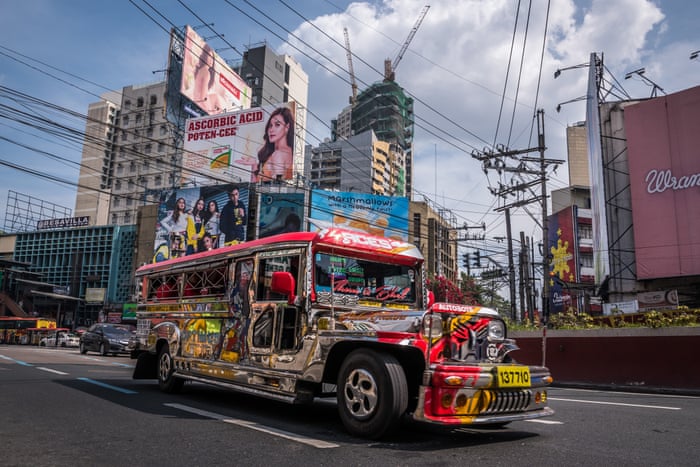Why Pick Transit Advertising Philippines for Your Brand
Why Pick Transit Advertising Philippines for Your Brand
Blog Article
An In-depth Assessment of the Methods and Methods for Successful Transportation Marketing Campaigns
Transit advertising and marketing projects offer a distinct opportunity for brands to involve with varied target markets in dynamic settings. As we discover these important components, it ends up being clear that the course to an impactful transportation advertising method is both gratifying and complex, increasing the inquiry of just how finest to browse these intricacies for maximum brand visibility.
Recognizing Target Demographics
Recognizing target demographics is important for the success of transit ad campaign (Transit Advertising Philippines). Determining certain audience sectors allows advertisers to tailor their messages effectively, making sure that the content reverberates with the desired customers. This strategy boosts engagement and optimizes return on financial investment
To successfully assess target demographics, online marketers should consider a number of crucial variables, including age, earnings degree, way of living, and profession preferences. As an example, a campaign focused on young professionals might concentrate on benefit and modernity, while one targeting families could emphasize security and reliability. Moreover, geographical factors such as rural versus urban settings can considerably affect consumer habits and choices.
Data collection approaches such as studies, focus groups, and social media analytics provide useful insights into group fads and consumer habits. By leveraging this information, advertisers can craft compelling narratives that line up with the worths and requirements of their target audience.
Inevitably, comprehending target demographics not just educates the critical instructions of transit marketing campaign but likewise makes certain that resources are alloted effectively. This targeted technique raises the probability of accomplishing project objectives, fostering brand name commitment, and driving conversions.
Imaginative Design Techniques
Effective interaction with target demographics depends heavily on innovative creative layout techniques in transportation advertising and marketing projects. To effectively record attention in a congested aesthetic setting, developers must focus on quality and visual influence. Using high-contrast components and strong shades can enhance presence, ensuring that messages are conveniently readable from a range.
Including dynamic images that resonates with the target market is vital. Aesthetic storytelling methods can evoke feelings and create unforgettable organizations with the brand name. Additionally, tactical use typography aids share vital information rapidly; proper dimensions and legible fonts further improve readability.
Incorporating interactive elements, such as QR codes or augmented truth features, can involve travelers beyond passive monitoring (Transit Advertising Philippines). These strategies not only promote individual communication but likewise bridge the space in between standard marketing and digital involvement
Furthermore, utilizing room creatively-- whether on bus wraps, transportation shelters, or metro advertisements-- can bring about ingenious layouts that break the mold and mildew of conventional marketing. By accepting artistic creative thinking while preserving brand name consistency, campaigns can promote a solid connection with their target market, ultimately driving both awareness and action. The assimilation of these style methods is vital for accomplishing effective transit advertising and marketing outcomes.
Strategic Placement Methods
Optimizing the influence of transit advertising hinges on critical positioning methods that guarantee ideal exposure and involvement. Reliable positioning involves analyzing high-traffic locations and comprehending traveler demographics to identify the most advantageous locations for advertisement screens. For instance, placing ads near click this site entrances and exits of transportation vehicles can capture the focus of boarding and touching down passengers, thus improving direct exposure.
Additionally, making use of both exterior and indoor surface areas of transit cars can dramatically widen reach. Outside advertisements, noticeable throughout commutes, involve pedestrians and other drivers, while interior ads target travelers in a captive setting. Furthermore, putting promotions in transportation centers, such as bus terminals or train terminals, enables raised perceptions as commuters change between various settings of transportation.
Timing is likewise crucial; straightening the campaign launch with peak traveling durations optimizes target market engagement - Transit Advertising Philippines. In addition, leveraging electronic displays in transit settings can help with vibrant web content, giving real-time updates and enhancing customer communication. By using these strategic positioning techniques, marketers can guarantee that their transit advertising projects attain optimal visibility, reverberate with the target market, and eventually drive preferred outcomes

Measuring Project Efficiency
To assess the success of transportation marketing campaign, it is important to utilize a variety of measurement methods that offer insights right into audience engagement and total performance. One main method is making use of crucial performance indicators (KPIs), such as reach, impressions, and involvement rates, which evaluate the amount of people checked out the ad and interacted with it.
Surveys and emphasis groups can also contribute in determining customer assumptions and recall, allowing marketing experts to understand the influence of their messaging. Furthermore, tracking internet site web traffic and social media sites Continued involvement during and after the campaign helps measure straight actions to the advertising.
Another effective method is utilizing location-based analytics, which can give information walking web traffic around particular transit areas, using understandings right into whether the campaign effectively caught the attention of travelers. Moreover, evaluating sales information can expose connections between transit advertising and marketing and raised income, offering concrete evidence of a project's performance.
Study of Success
Understanding the performance of transportation advertising projects with measurement methods lays the foundation for checking out real-world examples that illustrate effective results. By using geo-targeted digital ads and analytics, the brand measured a 30% boost in sales in regions where the wraps were prominently shown, demonstrating the direct impact of transit marketing.
One more engaging example comes from a regional not-for-profit organization that introduced a project on subway systems to advertise an area event. The company incorporated lively visuals with QR codes visit this website routing commuters to an enrollment page. Post-campaign analysis revealed a 50% increase in occasion participation compared to the previous year. Making use of direct engagement via technology intensified the project's reach and efficiency.

Conclusion
In summary, effective transit marketing campaign require a detailed strategy that integrates an understanding of target demographics, innovative layout strategies, and strategic positioning. By focusing on emotional interaction with vibrant visuals and maximizing visibility during optimal traveling times, brand names can substantially improve their impact. Moreover, ongoing dimension of project effectiveness via key performance indicators and customer feedback makes sure continual enhancement. Jointly, these approaches foster brand name presence and take full advantage of the roi en route advertising and marketing efforts.
Comprehending target demographics is essential for the success of transportation advertising projects.Effective communication with target demographics counts greatly on cutting-edge imaginative style techniques in transit advertising projects. By using these strategic positioning techniques, marketing professionals can ensure that their transportation marketing campaigns accomplish optimal presence, resonate with the target audience, and ultimately drive preferred results.
Understanding the performance of transit advertising projects with measurement strategies lays the groundwork for analyzing real-world examples that show effective outcomes.In recap, effective transit marketing campaigns require a detailed strategy that integrates an understanding of target demographics, innovative design methods, and calculated placement.
Report this page